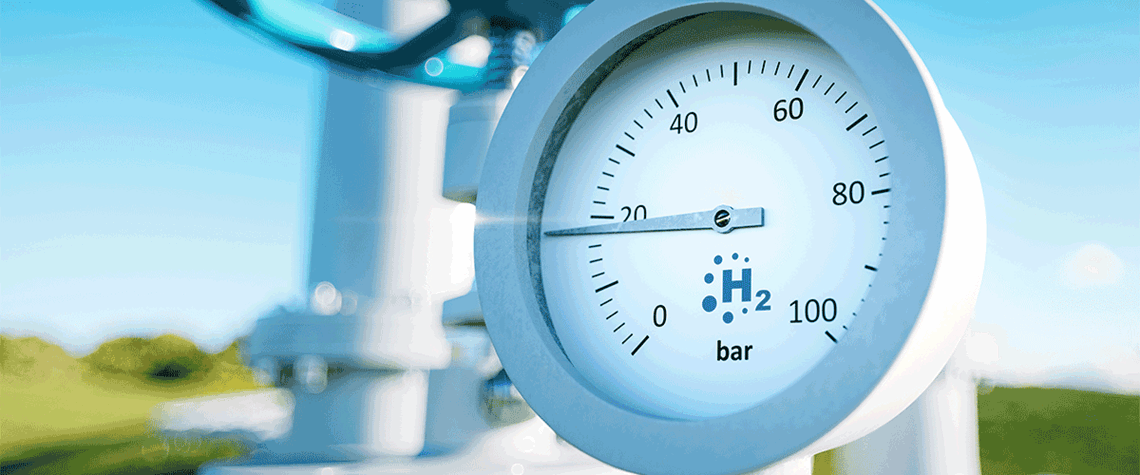The Russia-Ukraine conflict has raised huge questions for energy markets. Security and affordability have raced back up the policy agenda. Politicians and business leaders increasingly fret over the ‘energy trilemma’—the need to find energy sources that are cheap, clean and secure.
Hydrogen will need to address the trilemma question too. The buzz that has developed around the different shades of low-carbon hydrogen in recent years has been based on its potential for decarbonising hard-to-abate areas of transport and industry. But very little attention has been paid to the question of security—an oversight that the war’s dismantling of long-standing energy trade patterns and relationships is now exposing.
Global energy map
From an energy security perspective, part of the promise of the energy transition is its potential for redrawing the global energy map in ways that neutralise many of the energy-driven tensions that have bedevilled the fossil fuel era. But it would be foolish to think the future of energy will be that straightforward.
A low-carbon global economy built largely on renewables-driven electricity does hold out the prospect of more localised power generation and a reduction in cross-border energy trade. But electric vehicles, solar panels, windfarms and batteries all require access to critical minerals and manufacturing know-how. International competition and rivalry in these areas is already fierce, with China in particular keen to establish supply chain dominance.
Hydrogen too will present geopolitical challenges. Its proponents envisage the evolution of a globally traded commodity-style market, and any commodity subject to international trade also becomes vulnerable to geopolitics. The proposed ‘hydrogen revolution’ involves moving from the existing model of local production and consumption to something more akin to natural gas, with pipelines and tankers moving hydrogen longer distances over land and sea. And something more akin to natural gas, as any European gas buyer will tell you, is likely to involve much more serious questions over security.
That theoretical risk becomes more concrete when considering those countries with hydrogen export ambitions. Some, such as Chile, have not been major players in fossil fuels, and strengthen the idea that the transition will change the energy map. But others—Saudi Arabia, the UAE and Russia—have played a central role in fossil fuels’ dominance of the 20th century and in the attendant geopolitical complications.
Are potential hydrogen buyers factoring this into their planning? Japan’s hydrogen and ammonia import plans lean heavily on the Middle East and expose the country’s energy security to some of the same risks as its oil and gas imports from the region, not least tensions with China over the crucial East China Sea transit route.
In Europe, the RepowerEU programme, designed to address the continent’s dependence on Russian energy, envisages up to 10mn t/yr of green hydrogen imports by 2030, primarily from North Africa—where gas shipments to Europe have recently been complicated by the political row between Algeria and Morocco—but also, optimistically, from Ukraine.
Low-carbon hydrogen also faces new challenges on cost, another area where assumptions have been shredded by the consequences of Russia’s invasion. This is most obvious in Europe, hitherto a global pacesetter in establishing a policy and regulatory framework to incentivise clean hydrogen, but where the new realities of higher input costs for natural gas, wind and solar power pose big questions for hydrogen’s economics.
At first sight, blue hydrogen looks like the big loser. An energy source derived from suddenly expensive natural gas and needing the large-scale deployment of carbon capture and storage no longer looks quite so affordable—there have indeed been long spells, as gas prices soared during 2022, when blue hydrogen in Europe has looked much more expensive than green hydrogen produced using electricity from dedicated off-grid wind or solar plants.
But there are questions for green hydrogen too. Surging European power prices are bad news if you are a would-be green hydrogen producer needing to buy electricity from the grid to run your electrolyser. Sky-high prices may force EU policymakers to consider power market reforms that would reduce the influence of gas prices on the wider electricity market, and in theory lower power prices. But either way, if gas prices stay high—and there is little reason to expect a swift resolution to the conflict or a return to the status quo ante of Europe’s energy relations with Russia—then EU governments will increasingly need to look to other cheaper sources of power.
Coal—at least for a time—and nuclear will be part of that equation, but so too will wind and solar, where capacity additions will be needed to compensate for shuttered gas-fired generation, and to power electrical solutions for heating buildings, such as heat pumps. And if Europe cannot ramp up renewable energy capacity quickly enough, there may be limited excess electricity available for green hydrogen production.
Trade-offs
Governments will, of course, have to factor in the other elements of the ‘energy trilemma’, weighing energy security considerations and alignment with climate goals. They will be aware that, globally, blue hydrogen retains considerable momentum, not least among major natural gas producers, and bigger imports from these sources might be one option for Europe while it ramps up clean power capacity.
Perhaps the lesson here is that resolving the energy trilemma means taking and managing risks, making trade-offs between affordability, security and emissions. That is not a lesson that will please environmental campaigners or energy security hawks. But it is one that energy policy makers—and clean hydrogen advocates—would be wise to heed.
Jim Washer is the editor-in-chief of the media organisation, Argus Media.
This article is part of our special Outlook 2023 report, which features predictions and expectations from the energy industry on key trends in the year ahead. Click here to read the full report.









Comments